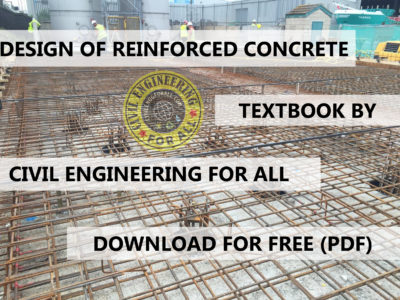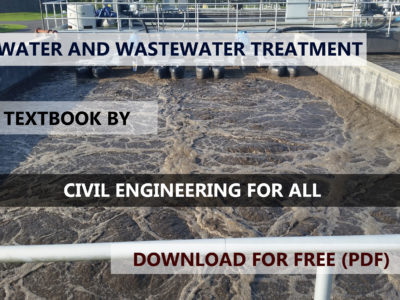
CONTENTS
- Introduction to Soil Mechanics and Foundations
- Geological Characteristics and Particles sizes of Soils
- Soils Investigation
- Physical Soil States and Soil Classification
- Soil Compaction
- One Dimensional Flow of Water Through Soils
- Stresses, Strains and Elastic Deformations of Soils
- Stress Path
- One Dimensional Consolidation Settlement of Fine-Grained Soils
- Shear Strength of Soils
- A Critical State Model to Interpret Soil Behaviour
- Bearing Capacity of Soils and Settlement of Shallow Foundations
- Pile Foundations
- Two-Dimensional Flow of Water Through Soils
- Stability of Earth Retaining Structures
- Slope Stability

Earth’s Profile
Our planet Earth has an average radius of 6373 km and a mean mass density of 5.527 g/cm3 compared with a mean mass density of soil particles of 2.7 g/cm3 and water of 1 g/cm3. Studies from elastic waves generated by earthquakes have shown that the earth has a core of heavy metals, mostly iron, of mass density 8 g/cm3 surrounded by a mantle. The mantle consists of two parts, upper mantle and lower mantle. The upper mantle is solid rock while the lower mantle is molten rock. Above the upper mantle is the crust, which may be as much as 50 km thick in the continental areas and as little as 7 km thick in oceanic areas.
IES MASTER SOIL MECHANICS GATE STUDY MATERIAL : CLICK HERE
Plate Tectonics
The crust and part of the upper mantle, about 100 km thick, make up the lithosphere. Below the lithosphere is the asthenosphere, which is about 150 km thick. The lithosphere is fragmented into about 20 large plates—large blocks of rocks—that slide against and move toward, away from, and under each other above hot molten materials in the asthenosphere. The theory governing the movements of the plates is called plate tectonics. Plate tectonics is based on uniformitarianism, which states that the earth’s forces and processes are continuous rather than catastrophic and the present is similar to the past

Composition of the Earth’s Crust
The materials that comprise the earth’s crust are sediments and rock. Sediments are solid fragments of inorganic or organic material resulting from the weathering of rocks and are transported and deposited by wind, water, or ice. Rocks are classified into three groups—igneous, sedimentary, and metamorphic— based on the earth’s process that forms them. Igneous rocks are formed from magma (molten rock materials) emitted from volcanoes that has cooled and solidified. Sedimentary rocks are formed from sediments and animal and plant materials that are deposited in water or on land on the earth’s surface and then subjected to pressures and heat. The heat and pressures that are involved in forming sedimentary rocks are low in comparison to those for igneous rocks. Metamorphic rocks are formed deep within the earth’s crust from the transformation of igneous, sedimentary, and even existing metamorphic rocks into denser rocks. Their appearance and texture are variable. For engineering purposes, foliation (layering caused by parallel alignment of minerals), weak minerals, and cleavage planes are particularly important because they are planes of weakness. No melting takes place, so the original chemical composition of the original rock remains unchanged. The rock texture generally becomes coarser-grained.
GEOTECHNICAL ENGINEERING GATE STUDY MATERIAL : CLICK HERE
Sedimentary rocks are of particular importance to geotechnical engineers because they cover about 75% of the earth’s surface area with an average thickness of 0.8 km. The sediments that comprise sedimentary rocks may be bonded (cemented) together by minerals, chemicals, and electrical attraction or may be loose. Clastic sedimentary rocks are small pieces of rocks cemented together by minerals such as carbonates (calcite, CaCO3) or sulphates (gypsum, CaSO4 [+2H2O]). Examples of clastic sedimentary rocks are sandstones formed from sand cemented by minerals and found on beaches and sand dunes; shales formed from clay and mud and found in lakes and swamps; and conglomerates formed from sand and gravels at the bottom of streams. Chemical sedimentary rocks are minerals such as halite (rock salt), calcite, and gypsum that have been formed from elements dissolved in water (e.g., the material found in Death Valley, California). Organic sedimentary rocks are formed from organic materials such as plants, bones, and shells. Coal is an organic sedimentary rock formed deep in the earth from the compaction of plants.

COMPOSITION OF SOILS
Soil Formation
Soils are formed from the physical and chemical weathering of rocks. Physical weathering involves reduction of size without any change in the original composition of the parent rock. The main agents responsible for this process are exfoliation, unloading, erosion, freezing, and thawing. Chemical weathering causes both reductions in size and chemical alteration of the original parent rock. The main agents responsible for chemical weathering are hydration, carbonation, and oxidation. Often, chemical and physical weathering take place in concert.
Soils that remain at the site of weathering are called residual soils. These soils retain many of the elements that comprise the parent rock. Alluvial soils, also called fluvial soils, are soils that were transported by rivers and streams. The composition of these soils depends on the environment under which they were transported and is often different from the parent rock. The prof le of alluvial soils usually consists of layers of different soils. Much of our construction activity has been and is occurring in and on alluvial soils. Glacial soils are soils that were transported and deposited by glaciers. Marine soils are soils deposited in a marine environment.
Soil Types
Common descriptive terms such as gravels, sands, silts, and clays are used to identify specific textures in soils. We will refer to these soil textures as soil types; that is, sand is one soil type, clay is another. Texture refers to the appearance or feel of a soil. Sands and gravels are grouped together as coarse-grained soils. Clays and silts are fine-grained soils. Coarse-grained soils feel gritty and hard. Fine-grained soils feel smooth. The coarseness of soils is determined from knowing the distribution of particle sizes, which is the primary means of classifying coarse-grained soils. To characterize f ne-grained soils, we need further information on the types of minerals present and their contents. The response of fine-grained soils to loads, known as the mechanical behaviour, depends on the type of predominant minerals present.
MADE EASY GATE GEOTECHNICAL ENGINEERING NOTES : CLICK HERE
Currently, many soil descriptions and soil types are in usage. A few of these are listed below.
- Alluvial soils are f ne sediments that have been eroded from rock and transported by water, and have settled on river and stream beds. Calcareous soil contains calcium carbonate and effervesces when treated with hydrochloric acid.
- Caliche consists of gravel, sand, and clay cemented together by calcium carbonate.
- Collovial soils (collovium) are soils found at the base of mountains that have been eroded by the combination of water and gravity.
- Eolian soils are sand-sized particles deposited by wind.
- Expansive soils are clays that undergo large volume changes from cycles of wetting and drying.
- Glacial soils are mixed soils consisting of rock debris, sand, silt, clays, and boulders.
- Glacial till is a soil that consists mainly of coarse particles.
- Glacial clays are soils that were deposited in ancient lakes and subsequently frozen. The thawing of these lakes revealed soil prof les of neatly stratified silt and clay, sometimes called varved clay. The silt layer is light in color and was deposited during summer periods, while the thinner, dark clay layer was deposited during winter periods.
- Gypsum is calcium sulphate formed under heat and pressure from sediments in ocean brine.
- Lacustrine soils are mostly silts and clays deposited in glacial lake waters.
- Lateritic soils are residual soils that are cemented with iron oxides and are found in tropical regions.
- Loam is a mixture of sand, silt, and clay that may contain organic material.
- Loess is a wind-blown, uniform, fine-grained soil.
- Marine soils are sand, silts, and clays deposited in salt or brackish water.
- Marl (marlstone) is a mud (see definition of mud below) cemented by calcium carbonate or lime.
- Mud is clay and silt mixed with water into a viscous fluid.
SOIL MECHANICS AND FOUNDATIONS TEXTBOOK BY CIVILENGGFORALL PDF
DOWNLOAD LINK : CLICK HERE
PASSWORD : CivilEnggForAll
OTHER USEFUL BOOKS
- RAJASTHAN STAFF SELECTION BOARD (RSSB) JUNIOR ENGINEER DIPLOMA CIVIL ENGINEERING EXAM 2022 – HINDI & ENGLISH MEDIUM SOLVED PAPER – FREE DOWNLOAD PDF (CivilEnggForAll.com)
- ISRO TECHNICAL ASSISTANT EXAM 2022 – CIVIL ENGINEERING – HINDI & ENGLISH MEDIUM – SOLVED PAPER – FREE DOWNLOAD PDF (CivilEnggForAll.com)
- MADHYA PRADESH PUBLIC SERVICE (MPPSC) COMMISSION – ASSISTANT ENGINEER EXAM – MPPSC AE 2021 CIVIL ENGINEERING – SOLVED PAPER WITH EXPLANATIONS – PDF FREE DOWNLOAD
- BIHAR PUBLIC SERVICE COMMISSION (BPSC) ASSISTANT ENGINEER EXAM – 2022 – CIVIL ENGINEERING – SOLVED PAPER – FREE DOWNLOAD PDF (CivilEnggForAll.com)
- ODISHA PUBLIC SERVICE COMMISSION – OPSC AEE PANCHAYATI RAJ EXAM 2021 – SOLVED PAPER WITH EXPLANATION – FREE DOWNLOAD PDF





















